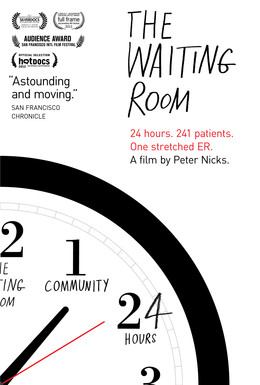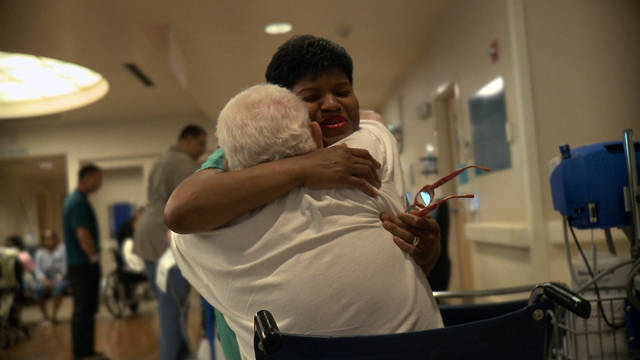Mitt Romney recently noted that we have a plan for the uninsured in America: They go to the emergency room. Waiting Room, a new documentary opening today, shows exactly what that means for our health system.
Last week, Mitt Romney noted in an interview on 60 Minutes that "If someone has a heart attack, they don't sit in their apartment and die. We pick them up in an ambulance, and take them to the hospital, and give them care." This expensive reality is part of what Obama's health care reform (and Romney's earlier plan in Massachusetts) was designed to address.

But Romney is correct. Today, public hospitals are often the only places that will see uninsured patients. A new documentary released today called The Waiting Room reveals the real-life drama that unfolds at Highland Hospital, a safety-net hospital in Oakland, California, that can barely keep up with the crush of people who come through its doors each day. Director Peter Nicks—who won an Emmy in 2007 for a PBS segment on investigative journalism—spoke to Co.Exist about the film, which will premiere in New York City on September 26, then head to 12 other cities around the country.
Co.Exist:Why did you make The Waiting Room?
Peter Nicks: The project began as an interactive digital project where we met people in the waiting room and sat down with them for a few minutes. We wanted to get a sense of what these people are dealing with. As health care became such a widely discussed issue and debated public policy question, I felt there was a real opportunity to tell a story about one community that wasn't really being represented in those conversations. I mean, these are the uninsured. The voices of people being stuck in these waiting rooms weren't really being heard.

Why is it so important for this population to be heard?
In the political context, it's become pretty easy to malign other people and think we know who other people are, whether they're being lazy or whether they're being irresponsible. It's really hard to build empathy if you don't know someone, if you don't sit down next to them and have a conversation.
Why did you set your film at Highland Hospital?
Highland represents a lot of communities in America. It's one of the most diverse places you'll ever see. You've got a collection of people who come from all class and race backgrounds. It's a place where people come and sit down next to each other and have conversations that would never do that in other situations. I found that really fascinating, and I wanted to capture that sense of, this is a community of people who are bound together by a common challenge. To strip away the politics and just let people reveal and talk about what they are going through. We let people experience what it's like on this one day in a public hospital and by extension all public hospitals in the country.
What did you learn while making the film?
There are really three things that surprised me. One was the affinity that people actually had for the hospital, the connection between the patients and the staff. On the health care side, it's remarkable how people are using the waiting room as their doctor basically. How many people didn't have a doctor. The third thing that struck me is the compassion of the caregivers in the hospital.
What do you hope people will get out of the film?
We want to try to build empathy for these communities who are living day to day without access to health care. We want people to experience in an intimate way what it's like not to have health insurance in America.